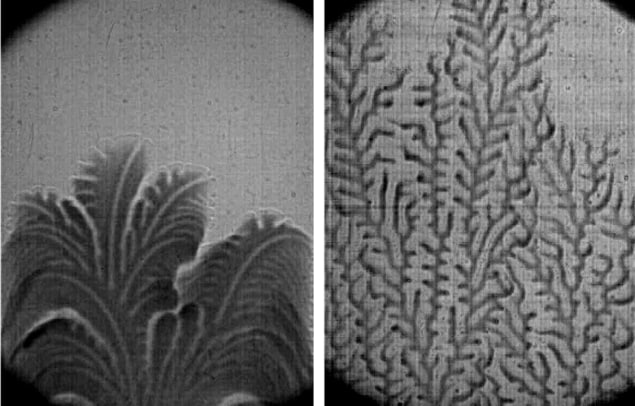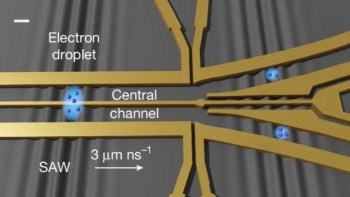
Hydrogen flame fronts can spread efficiently in adverse combustion conditions, researchers in Spain and Germany have shown. The team, led by Mario Sánchez-Sanz at the Carlos III University of Madrid, made the discovery by observing how hydrogen flames can efficiently access new fuel by breaking into fractal-like patterns. Their results provide important new information for those designing storage cells for hydrogen fuel.
Hydrogen is rapidly emerging as a desirable alternative to fossil fuels because it simply creates water when burned. However, the safe storage of hydrogen also poses significant challenges. Storage systems are prone to leakage and the gas is extremely difficult to detect in industrial settings – creating an ever-present danger of explosion.
Currently, it is widely believed that these dangers can be avoid by storing hydrogen in confined spaces, and in low-concentration mixtures with air. The idea being that these poor combustion conditions should quench any flames before they can reach a large proportion of the gas.
Mind the gap
Sánchez-Sanz’s team investigated this storage scenario through a setup involving two transparent vertical plates, separated by a narrow gap. After filling this gap with a low-concentration mixture of hydrogen in air, they ignited the gas from either the top or the bottom. Then they tracked the path of the resulting flame fronts by imaging the trails of condensed water they left behind.

Dousing flames with low-frequency sound waves
For gaps less than 6 mm wide, and with hydrogen concentrations at around 5%, these flames did not quench as the team had expected, but broke into smaller propagating cells that were separated by cold, unburnt gas. Two distinct propagation modes were revealed in their observations. In one the flame fronts split into fractal-like patterns resembling the leaves of a fern. The movements of the fronts resembled the spread of starving colonies of fungi and bacteria as they search for nutrients. In the second propagation mode, the fronts broke into a smaller number of stable flame fronts that moved in straight, steady trajectories like the smouldering patterns that occur during the combustion of thin, solid materials.
Through computer simulations, Sánchez-Sanz and colleagues determined that each of these patterns emerge due to the high diffusivity of hydrogen, combined with extreme heat loss at the two plates. They also repeated their experiments with two far less diffusive hydrocarbon fuels, in which flames were quickly quenched by heat loss.
The research is described in Physical Review Letters.



